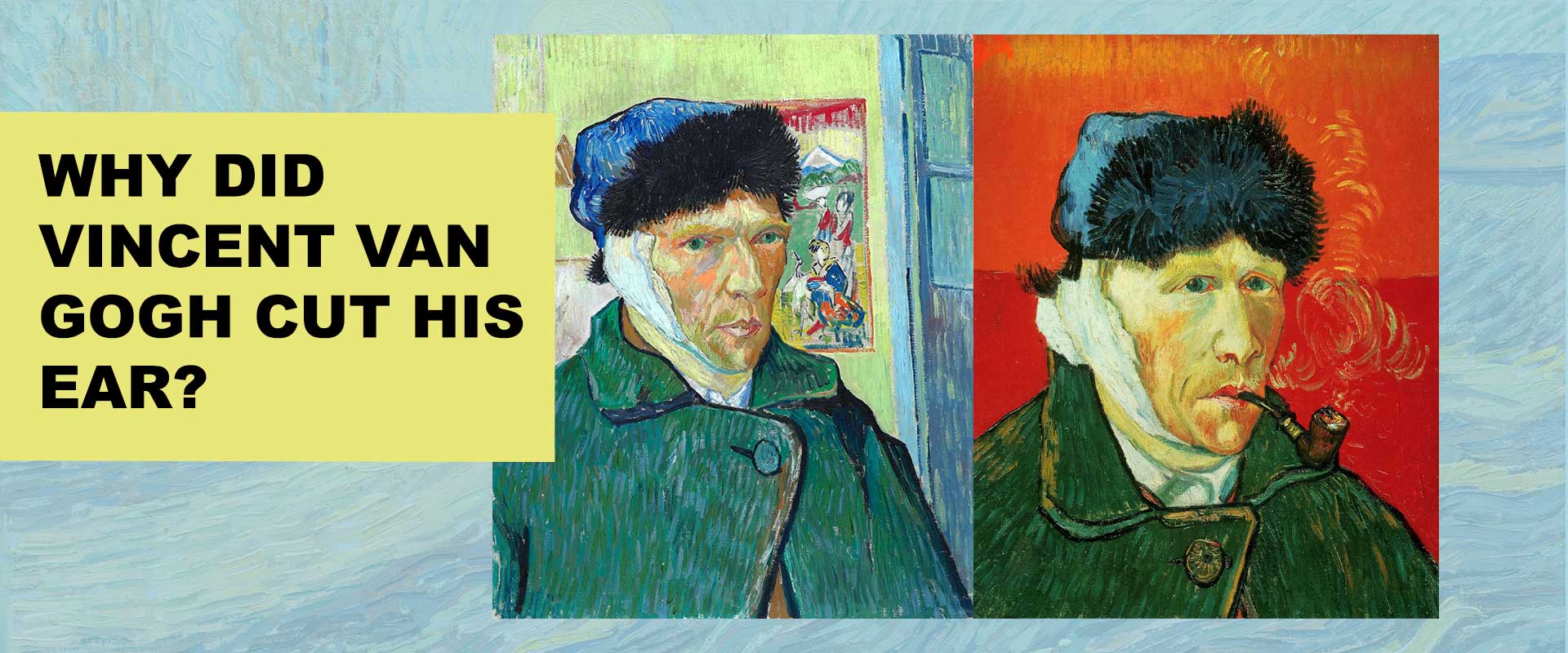Few stories in art history are as infamous—or misunderstood—as Vincent van Gogh cutting off his ear. Often reduced to a shocking anecdote, this event has become a symbol of the “tortured artist” stereotype. But the reality behind it is far more complex, involving mental illness, personal conflict, and artistic passion.
So, why did Van Gogh cut off his ear? Was it a moment of madness, a desperate cry for help, or something else entirely?
In this article, we’ll explore the real story behind the myth, debunk popular misconceptions, and examine how this moment reflects the deeper struggles of one of history’s greatest artists.
What Actually Happened?
The Incident: December 23, 1888
Van Gogh cut off part of his left ear on the evening of December 23, 1888, while living in Arles, France. After the act, he wrapped the severed portion in cloth and reportedly delivered it to a woman at a local brothel.
He was discovered unconscious the next day and taken to the hospital, where he was treated by Dr. Félix Rey.
What Caused Van Gogh to Do It?
There is no single cause—but a combination of emotional, mental, and situational factors contributed to the breakdown.
1. A Breakdown in His Friendship with Paul Gauguin
Van Gogh had invited fellow artist Paul Gauguin to live and work with him in the “Yellow House” in Arles. Their collaboration was intense—and stormy. Over the weeks, the relationship deteriorated, marked by arguments about art, life, and philosophy.
On the night of the incident, the two had a heated fight. Gauguin later recalled Van Gogh threatening him with a razor. Afterward, Van Gogh returned home alone and mutilated his ear.
2. Severe Mental Illness
Van Gogh had long suffered from episodes of mental instability, including depression, hallucinations, and seizures. Though he was never officially diagnosed, modern experts speculate he may have had:
- Bipolar disorder
- Epilepsy
- Temporal lobe dysfunction
- Possibly lead poisoning from his paints
This incident marked one of the most dramatic episodes of his worsening condition, which would recur until his death.
3. Isolation and Stress
Living in rural Arles, far from Paris and the art world, Van Gogh faced social isolation and a lack of support beyond his brother Theo. Financial pressure, artistic frustration, and deep loneliness all played a part in pushing him toward the edge.
Myths vs. Facts
Myth 1: He Cut Off His Entire Ear
Fact: He only removed part of the left ear, likely the lower lobe.
Myth 2: He Gave the Ear to a Lover
Fact: He reportedly gave the ear to a prostitute at a nearby brothel, though details are debated.
Myth 3: It Was a Publicity Stunt
Fact: This was not a calculated move—it was a severe psychiatric crisis.
What Happened After the Incident?
Van Gogh spent time in the hospital in Arles, followed by voluntary admission to a mental asylum in Saint-Rémy-de-Provence. During this period, he created some of his most famous works, including:
Despite his mental struggles, his artistic output during this time was prolific and visionary.
How Did This Affect His Career?
At the time, Van Gogh was little-known and unappreciated, selling just one painting during his lifetime. The ear incident only added to the stigma surrounding him. Many locals petitioned to have him evicted, viewing him as dangerous.
Yet, in the decades that followed, this tragic moment became a symbol of his suffering and genius, shaping his mythos and inspiring countless books, films, and artworks.
A Symbol of Struggle and Humanity
Today, the story of Van Gogh’s ear is often told without nuance. But far from being a bizarre curiosity, it reflects the very human struggles with:
- Mental illness
- Loneliness and rejection
- The intense emotional burden of creative ambition
It’s a reminder that behind every masterpiece is a person—flawed, fragile, and searching for meaning.
Experience His Legacy Firsthand
Despite his suffering, Van Gogh left behind a legacy of beauty and emotion. Explore our Van Gogh wall art collection and bring his expressive brilliance into your home. From The Starry Night to Sunflowers, his works continue to speak across time.
Conclusion
So, why did Van Gogh cut off his ear? The answer lies in a complicated mix of emotional trauma, mental illness, and personal turmoil—not in shock value or spectacle. It was a moment of crisis in a life marked by both pain and immense creativity.
Understanding the story behind the myth allows us to see Van Gogh not just as a legend, but as a human being—one whose vulnerability made his art all the more powerful.





